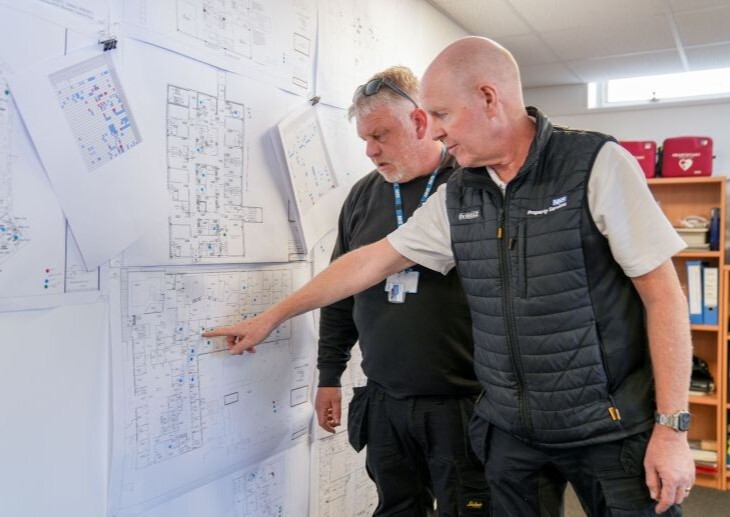The NHS 10 year plan is expected any day now with many systems anticipating it will help answer the question, ‘what should neighbourhood health look like in practice?’.
While national clarity is pending, local areas can take early, practical steps to achieve a workable neighbourhood approach that meets the needs of their population.
NHS South Central and West Commissioning Support Unit has recently worked with ICBs, and based on this we’ve developed a six-pillar framework to help systems establish effective integrated neighbourhood teams (INTs):
- Define a shared vision with the community – neighbourhood teams need a high-level vision to bind participating organisations and individuals together to deliver agreed objectives. Building in community input at this early stage is key – the community voice can help ground professionals and maintain focus on what the group is seeking to achieve for its population. Building on the approach taken by the Fuller Report, we find getting participants to individually sign up to the shared vision creates the commitment needed to navigate inevitable challenges along the way.
- Foster a collaborative, empowered team culture – the role of organisational and INT culture cannot be understated. Neighbourhood working is complex and requires curious, creative people with time and enthusiasm to engage in coproduction and community engagement. This is less about authority and positional power and more about empowering frontline staff and residents, leaning into people’s natural skillsets and providing the required decision-making framework to enable progress.
- Establish governance that supports local decision making – INTs must have the right controls and processes to realise their vision and model of care. This typically includes alignment on roles, decision frameworks, information flows and data sharing. It’s particularly important that where less senior staff are involved, they have the support and decision-making capabilities to act on behalf of their organisations.
- Use data to drive priorities and equity – delivering evidence-based healthcare relies on effective use of tools and information. Digital maturity can vary considerably across organisations and some ICBs are more data-led than others. However, it is essential to have a baseline to understand your population and their needs. In some cases, we’ve worked with organisations that have had a real drive to tackle a particular health need, only to find that population health data analysis points to very different needs. Using data to understand health inequalities and priorities can also be instrumental in securing neighbourhood-wide support for initiatives that may benefit one organisation more than another.
- Build and support integrated teams – teams at neighbourhood level rely on people who are supported, connected and able to work across traditional boundaries. Effective planning around roles, recruitment, support and development is essential. This includes thinking practically about how staff from different organisations will collaborate day to day – from line management and supervision to training and communication. Building the right environment and commissioning structures for people to thrive in their roles is key to making integrated working a reality.
- Use estates strategically to improve access – how can your neighbourhood’s collective estates portfolio be used more effectively to improve access to care? The Covid vaccination programme showed how effective taking healthcare delivery into communities can be. INTs have the potential to improve interaction between citizens and healthcare, making it easier to engage with preventative health services.
Valuing the process
These six pillars provide a helpful framework, but we need to recognise that achieving integrated working across organisations is tough, and reinvention fatigue is not uncommon.
In our experience, a defined problem or objective helps to galvanise collaborative working. However, the process that partner organisations go through to develop an integrated solution is at least as important as the intended outcome. As experienced system conveners, our role as a commissioning support unit (CSU) is to create a safe space, with facilitation and tools that enable neighbourhoods to move from aspiration to action. We help systems build the relationships and shared purpose needed to drive sustainable change. It is hard to put a value on high strength relationships, but they form the solid foundations required to work through the complexities involved in true multidisciplinary working – it is where the magic happens.
Ownership and evaluation
Neighbourhood initiatives like INTs benefit from clear deliverables that help teams track progress and understand when key milestones have been achieved. In one health and care system we supported, named leads were assigned to each pillar of the neighbourhood model to strengthen accountability, with supporting groups formed around relevant skills and expertise. Ensuring a broad mix of representation across organisations helped to embed genuine neighbourhood ownership.
Using a logic model or similar evaluation framework can further support teams to define intended outcomes, monitor progress and assess whether their work is having the desired impact on the local population.
Getting started
At NHS Confed Expo, Sir James Mackey said the aim is to not be too focused on who controls what, but to find an operating model which trusts people to do what works. In some cases, we expect neighbourhood healthcare will make use of existing structures such as PCNs, particularly where effective relationships and multidisciplinary teams are already in place. In others, a fresh approach may be needed, particularly where existing structures have struggled to collaborate. Ideally, neighbourhoods should be broad, incorporating representation from education, local authorities, police, community and the voluntary sector, and avoid becoming overly health-led, potentially missing an opportunity to tackle wider determinants of health.
Neighbourhood health isn’t just about new structures – it’s about new ways of working. By using data, developing trust and building shared purpose, systems can unlock the potential of truly integrated teams. With the right support and facilitation, this isn’t just possible – it’s already happening.
Sue Blackman is primary care strategy and transformation programme director at NHS South Central and West Commissioning Support Unit






